1. Fluffy Balls of Yellow Down
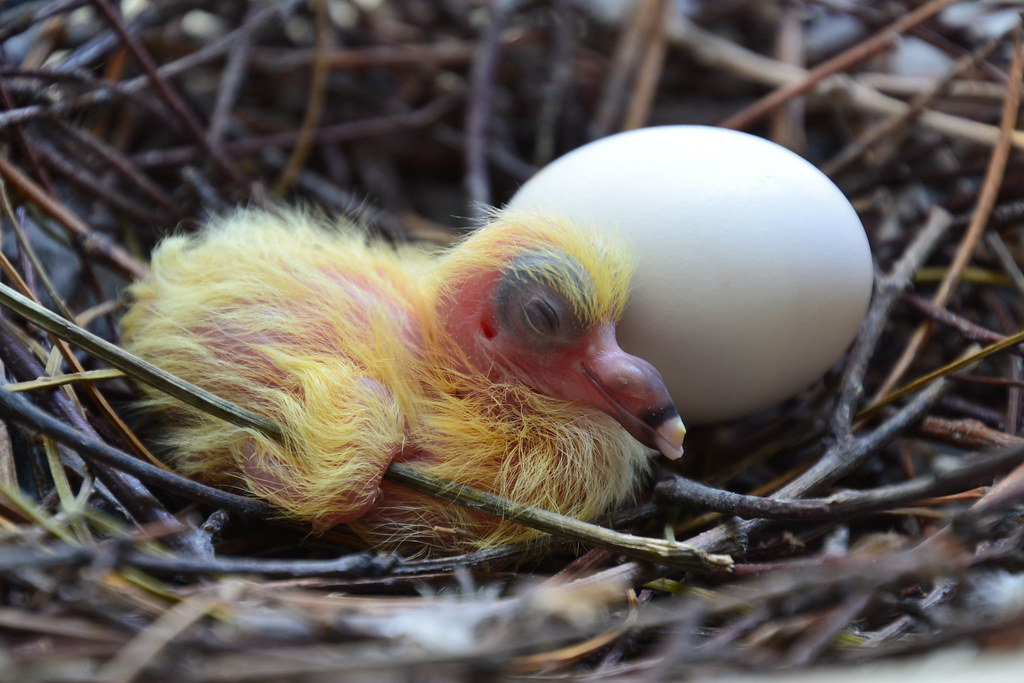
Baby pigeons, or squabs, are among the fluffiest and most endearing baby birds you’ll ever see. Their bodies are covered in bright yellow down that makes them resemble tiny chicks more than the sleek pigeons we often spot in urban areas. With their round heads, oversized eyes, and adorably small beaks, these little ones are utterly charming. Their wobbly movements add to their appeal, as they attempt to navigate their tiny nests with clumsy determination. During this early stage, they are entirely dependent on their parents, who feed them a unique substance called “pigeon milk.” Produced in the parent’s crop, this milk is nutrient-rich and vital for the squabs’ development. Since baby pigeons spend their first few weeks tucked safely away, you’re unlikely to spot them outside of their nests, but trust us—they’re absolutely adorable.
2. Their Awkward Teenage Phase
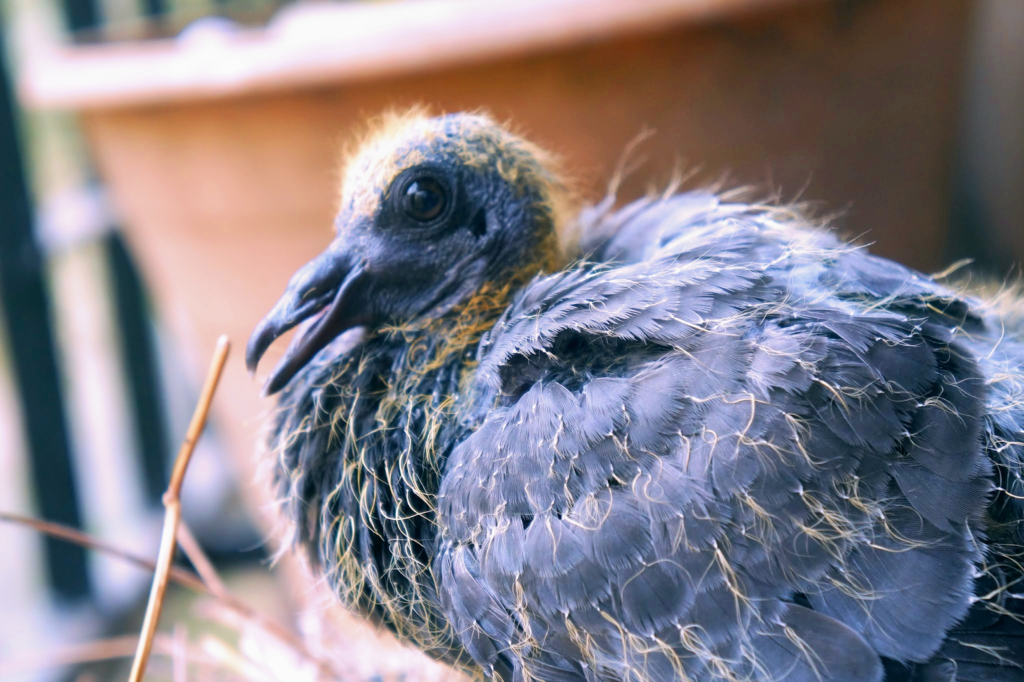
After the initial fluffy stage, baby pigeons go through what could be described as their awkward teenage phase. Around two weeks old, their bright yellow down begins to give way to patches of soft gray feathers. The transition can leave them looking mismatched and scruffy, but their unique charm remains. At this stage, their big eyes and slightly oversized heads make them appear a little comical, but it’s impossible not to find them endearing. They’re also learning to coordinate their movements, which means you’ll see them attempting to preen themselves or stretch their wings with varying degrees of success. This phase is crucial as they start to gain strength and develop their adult plumage. While their fluffiness might fade, their undeniable cuteness persists as they grow into their personalities.
3. Tucked Safely in the Nest
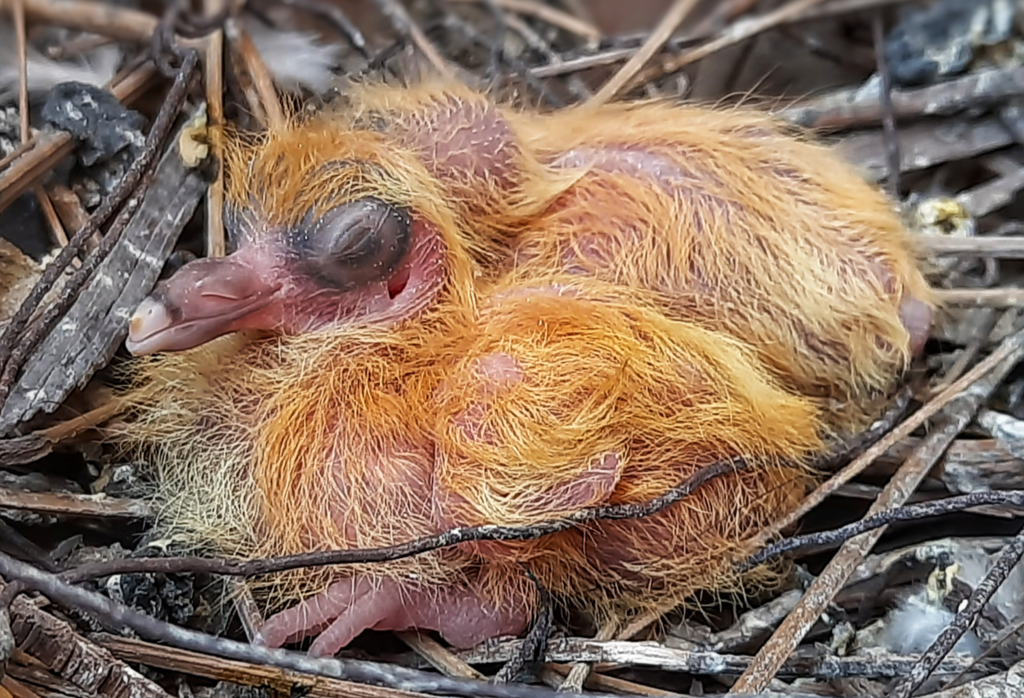
One reason you’ve probably never seen a baby pigeon is that they spend most of their early days hidden in nests. Unlike many bird species that nest in trees or open spaces, pigeons prefer secluded, hard-to-reach spots. Their nests are often built on building ledges, under bridges, or in urban crevices where predators can’t easily reach them. Baby pigeons stay in these nests for about three to four weeks, a period when they grow rapidly and depend entirely on their parents. This hidden lifestyle protects them from harm but also keeps them out of sight, making sightings of squabs quite rare. Seeing them in their cozy nests, snuggled up with their siblings and cared for by attentive parents, offers a rare glimpse into the nurturing world of pigeons.
4. Big Beaks and Bigger Attitudes
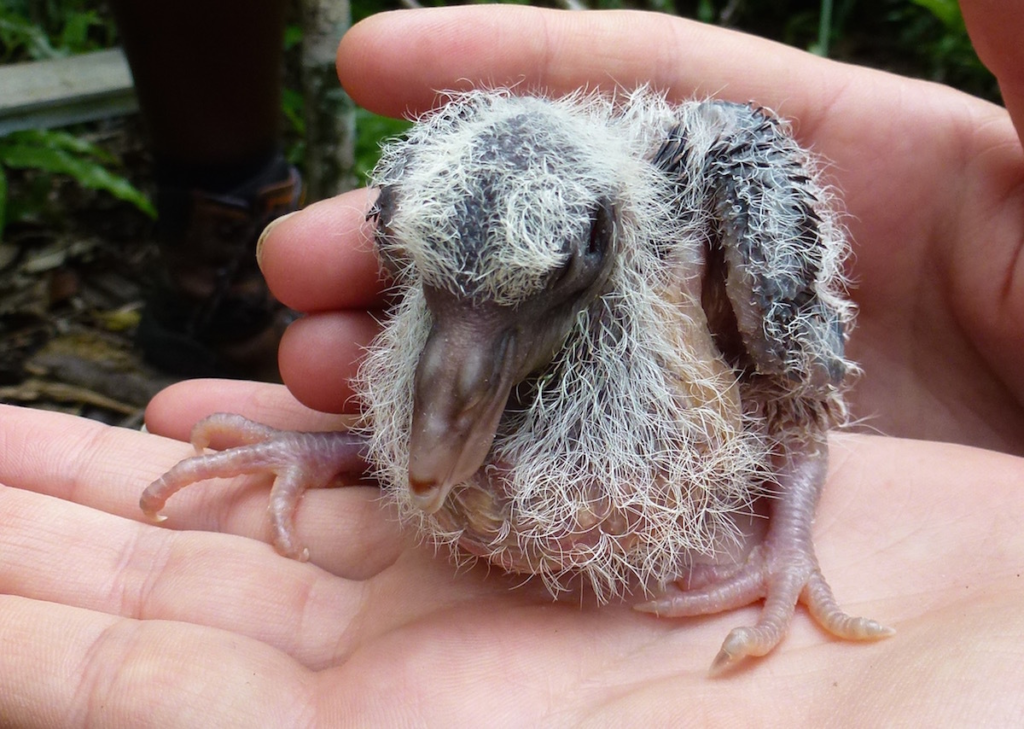
One of the standout features of baby pigeons is their disproportionately large beaks. These big, slightly curved beaks are essential for feeding, allowing them to latch onto their parents’ mouths to consume nutrient-rich pigeon milk. While their beaks may look oversized compared to their tiny heads, they’re perfectly adapted for the job. These little ones aren’t shy when it comes to mealtime; they’ll flap their tiny wings, chirp loudly, and even jostle their siblings to ensure they get fed. This feisty behavior, paired with their tiny size, is both amusing and heartwarming. As they grow, their beaks gradually become more proportional to their bodies. But during this early stage, their “big beak energy” is an unforgettable part of their charm, showcasing their determination and vitality.
5. Snuggly Sibling Moments
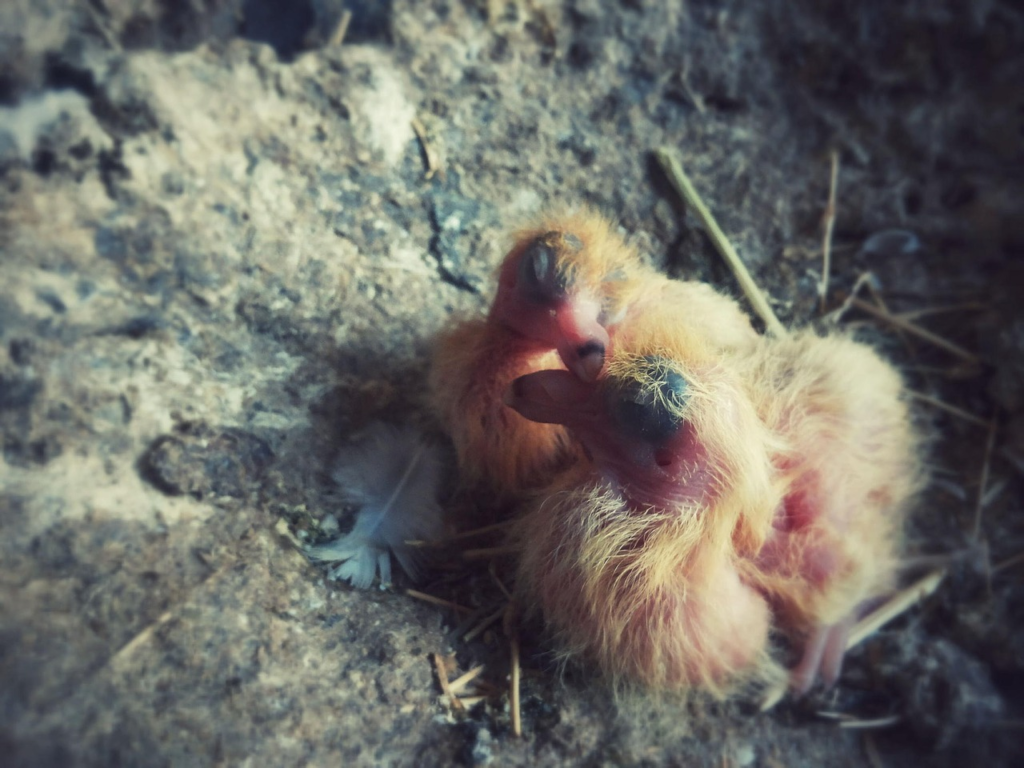
If one baby pigeon is adorable, a nest full of them is next-level cute. Squabs often huddle together for warmth and comfort, forming a tiny pile of yellow down and feathered fluff. These snuggly moments highlight their social nature and the strong bonds they form with their siblings during their early days. Whether it’s a gentle nuzzle or a playful peck, their interactions are a delight to watch. These cozy scenes are also a testament to the nurturing instincts of their parents, who provide the perfect environment for their little ones to grow. It’s rare to catch a glimpse of these tender sibling moments in the wild, but when you do, it’s a reminder of the hidden beauty in even the most ordinary-seeming creatures.
6. Those Adorable Wing Stretches
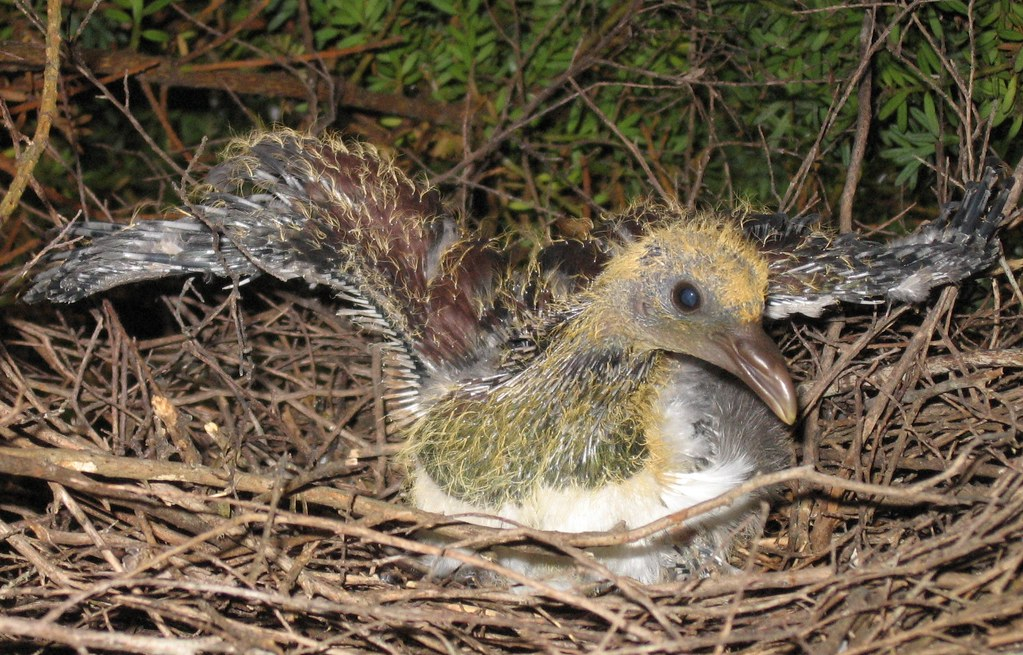
As baby pigeons grow, one of the first signs of their development is their attempt to stretch their tiny wings. At first, these stretches are clumsy and uncoordinated, but with time, they grow stronger and more deliberate. Watching them flap their little wings for the first time is like witnessing a toddler learning to walk—it’s equal parts adorable and inspiring. These wing stretches are their way of building the muscles they’ll need for flight, and each awkward attempt is a step toward independence. Seeing a baby pigeon practicing its flaps, with its determined expression and wobbly balance, is a rare treat. It’s a reminder of the resilience and determination of all living creatures as they take their first steps—or flaps—into the world.
7. The Big-Eyed Gaze
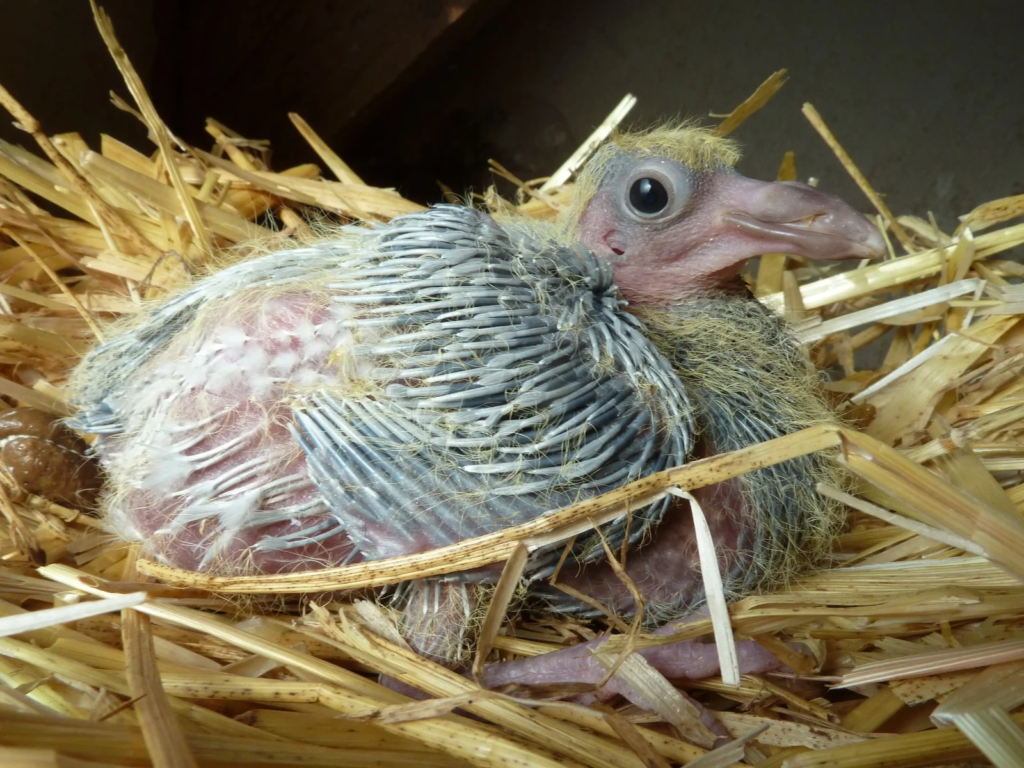
One of the most captivating features of baby pigeons is their wide, soulful eyes. These big eyes give them an innocent, almost curious expression that’s hard to resist. In their early days, their gaze seems to take in the world with wonder, as if they’re trying to make sense of their surroundings. This wide-eyed look is particularly noticeable during their nest-bound phase when their faces are still soft and rounded, adding to their overall cuteness. As they grow, their eyes remain expressive, but they lose some of that baby-like wonder. However, for those early weeks, their big-eyed gaze is a reminder of how new and exciting the world must seem to them.
8. Early Steps into the World
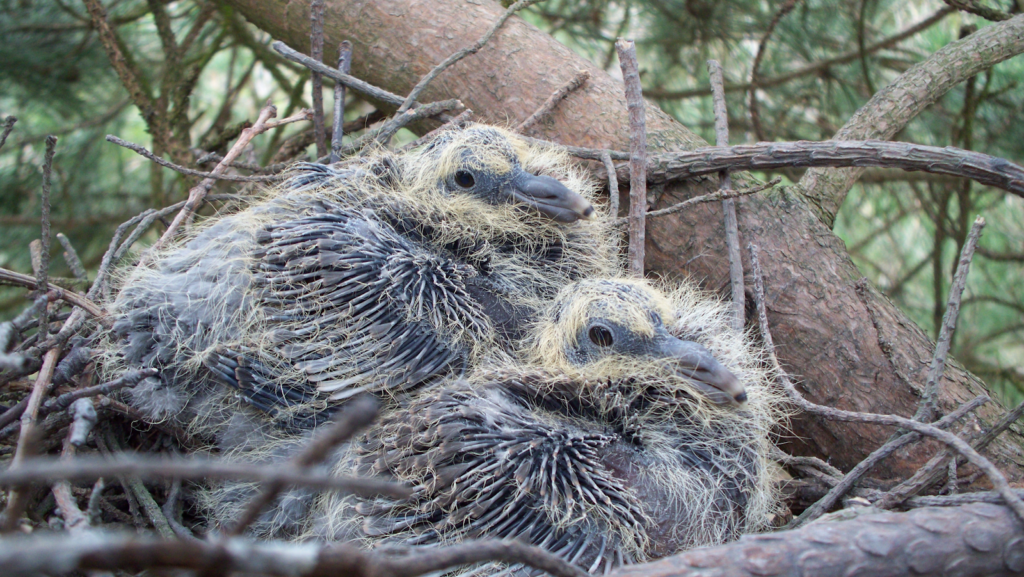
When baby pigeons finally venture out of their nests, it’s a moment of triumph and cuteness combined. These fledglings, now covered in soft gray feathers, take their first tentative steps into the wider world. Their movements are often wobbly and unsteady, much like a toddler learning to walk, but their determination is undeniable. Each step they take is a mix of curiosity and bravery as they explore their surroundings for the first time. Watching them venture out is both heartwarming and inspiring, as they stumble, stretch their wings, and slowly build confidence. This stage of exploration is a vital part of their development, preparing them for the independence they’ll soon embrace.
9. The Miniature Coos
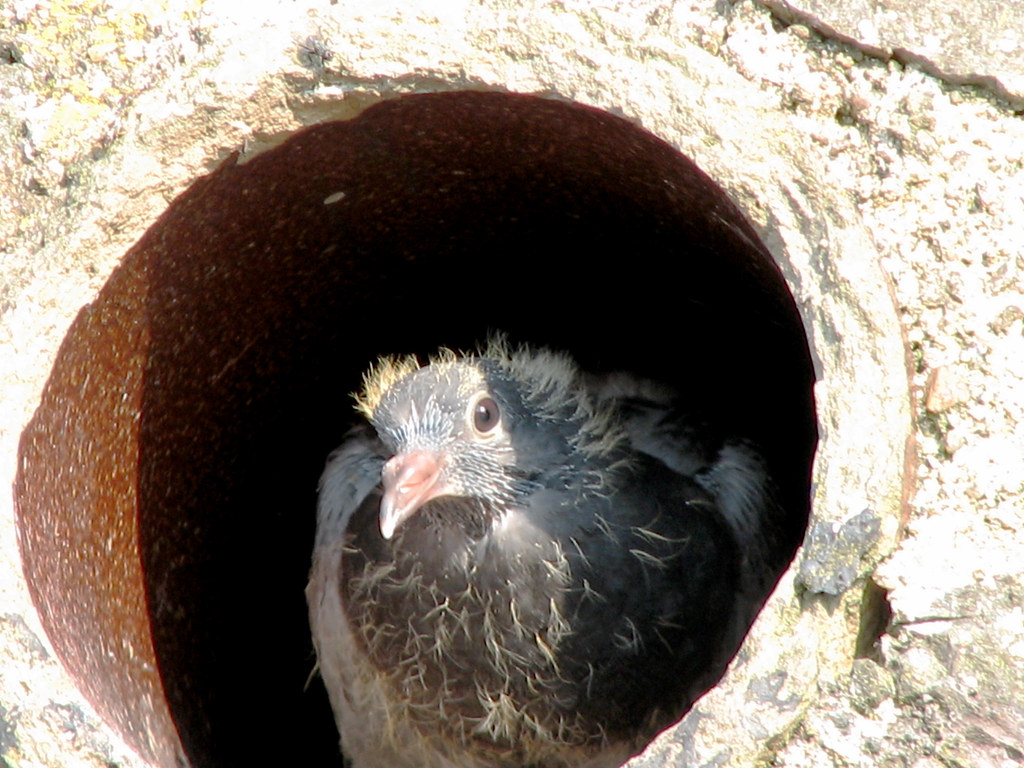
Even in their early days, baby pigeons begin practicing the sounds that will become their iconic coos. These tiny, soft sounds are their way of communicating with their parents and siblings, often heard during feeding times or moments of comfort. Their coos might be faint and tentative at first, but they grow stronger as the squabs mature. Hearing these miniature coos is like listening to a baby’s first words—a sweet and tentative step toward finding their voice. It’s a small but powerful reminder of how even the most ordinary creatures have unique ways of expressing themselves.
10. Transforming into Mini Adults

By the time baby pigeons leave their nests, they’ve undergone an incredible transformation. The fluffy yellow down they started with is replaced by smooth gray feathers, and their once oversized features are now proportional. At this stage, they look like miniature versions of adult pigeons but retain a hint of youthful awkwardness that’s utterly endearing. Their big, expressive eyes, still slightly larger than those of adults, hint at the babies they once were. Watching this transformation is a privilege, offering a rare glimpse into a stage of life that’s often hidden from view. These mini-adults are a testament to the beauty of growth and the quiet marvels of the natural world.


